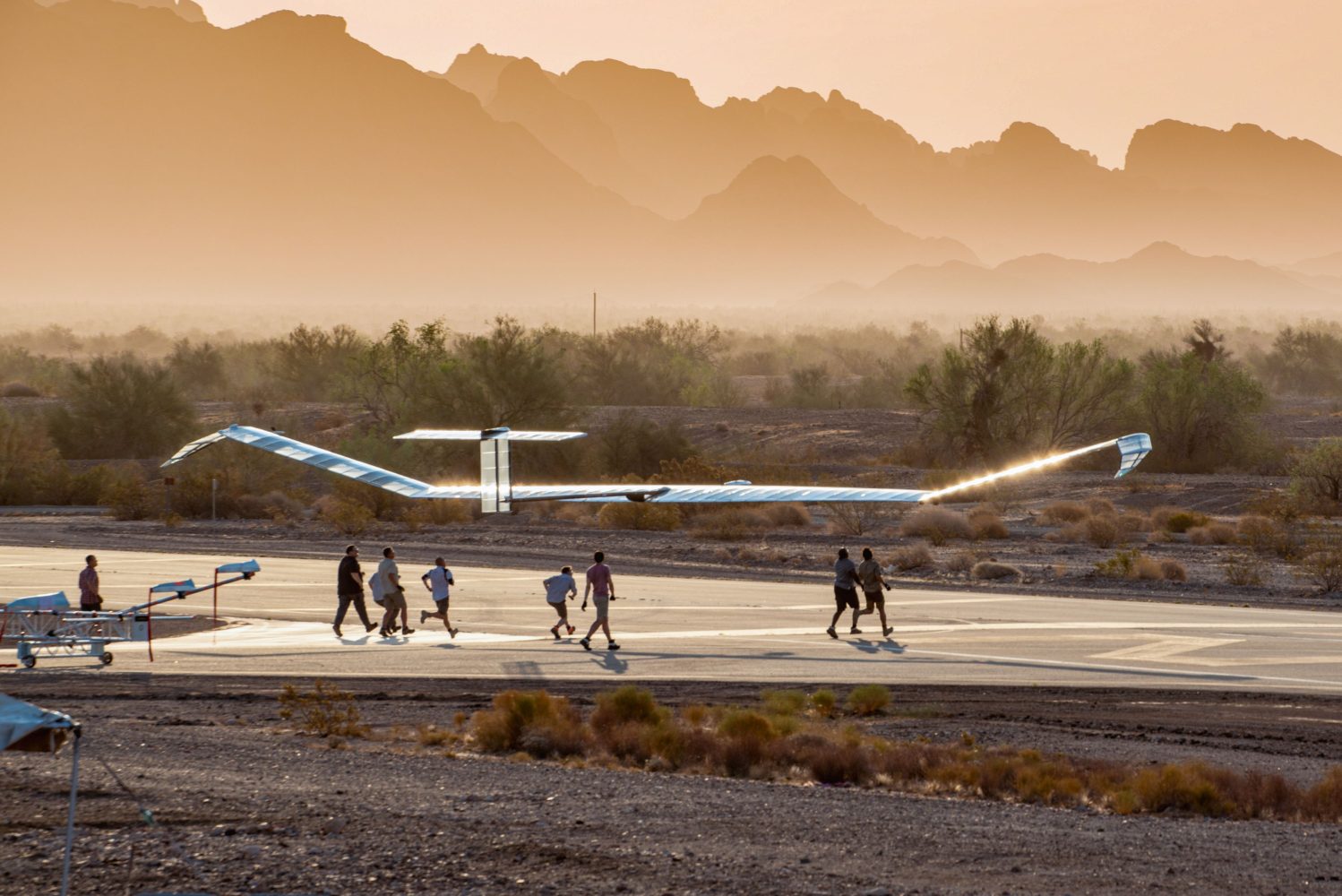
Airbus has announced its Zephyr solar-powered high-altitude platform system (HAPS) drone has completed a barrage of summer tests in Arizona, including what the European aviation consortium described as a record-setting 36 days of flight time spread over a two-day mission.
The trials were carried out at both lower and stratospheric altitudes, the latter of which involved one mission that Airbus says set a new, 76,100-foot world record for Zephyr’s category of solar-powered HAPS drone. The series of six total flights – including two in the stratosphere – focused not only on proving the craft’s endurance, but also putting it through a series of tests using an array of onboard applications.
Chief among those was the “Optical Advanced Earth Observation system for Zephyr” payload, which is designed to provide users instant, uninterrupted, and enhanced situational awareness. Airbus said the trials were designed to demonstrate the plane’s utility to potential business, government, and defense clients during flights far above restricted airspaces, and within those shared with commercial air traffic.
Airbus said the pair of the stratospheric flights lasted 18 days each, or more than 36 days total – a new record. Those extended Zephyr’s previous 887 hours of stratospheric operation to 2,435. That, the company said, marked significant progress for its fixed-wing, solar-powered HAPS drone, and the drive to make prolonged stratospheric missions a routine reality for customers soon.
“Credible and proven ultra-persistence, stratospheric agility, and payload interoperability underscore why Zephyr is the leader in its sector,” said the head of Airbus’ uncrewed aerial systems, Jana Rosenmann. “It is a sustainable, solar-powered, (intelligence, surveillance, and reconnaissance-) and network-extending solution that can provide vital future connectivity and earth observation to where it is needed.”
With a wingspan of 25 meters, total weight of 75 kg, and sets of frontline and secondary solar-powered batteries that alternate when the sun is no longer present, Zephyr requires no additional fuel, and can stay aloft for months at a time. Airbus says that once the solar-powered HAPS drone is certified and operational, it will provide new see, sense, and connect capabilities to commercial and military customers alike – all 100% free of carbon emissions.
The company believes the craft and its onboard tech may revolutionize disaster management, including in observing the spread of wildfires and oil spills. It will also be capable of providing constant, open-ended surveillance, and monitoring of the world’s changing environmental landscape. Still elsewhere, it will be able to establish and offer reliable communication links to the most unconnected parts of the world.
“Working with Airbus and the Zephyr team during the 2021 flight campaign, significant progress has been made toward demonstrating HAPS as a capability,” said James Gavin, the head of the procurement unit for the UK Ministry of Defense, whose contractors originally produced Zephyr. “This summer’s activities represent an important step toward operationalizing the stratosphere.”
FTC: We use income earning auto affiliate links. More.




Comments